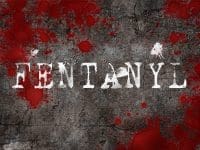This case study illustrates nursing skills and critical thinking in action.
Takeaways:
- The science behind medication administration is our knowledge of pharmacology, pathophysiology, and anatomy and physiology that guides us to make safe decisions and anticipate complications.
- The art behind medication administration comes from how we implement plans to improve a patient’s physical condition and increase his or her chance of a good outcome.
Most nurses administer medications every day. Because it’s such a frequent, repetitive task, we may take our knowledge and skills for granted. Forthat reason, we should periodically revisit the principles of medication administration that we learned in nursing school and remind ourselves that medication administration, like nursing, is both an art and ascience.
The science behind medication administration is our knowledge of pharmacology, pathophysiology, and anatomy and physiology that guides us to make safe decisions and anticipate complications. The science helps us understand why a medication is ordered (a beta-blocker manages a fast heart rate and hypertension) and what its potential adverse effects might be (beta-blockers cause bronchial con- striction, which may lead to dyspnea in a patient with asthma). The art comes from how we implement plans to improve a patient’s physical condition and increase his or her chance of a good outcome. We advocate and collaborate with other healthcare team members, and we reach beyond our current knowledge to specialized resources when something about the patient’s condition doesn’t “feel” right and we want to see if he or she is experiencing an adverse effect that we aren’t familiar with.
The following case study illustrates how the art and science combine to achieve optimal patient outcomes. The patient is typical of many who are admitted to an acute-care facility—he has multiple comorbidities and is taking multiple medications.
The patient
You’re assigned to care for Mr. Smith, a 75-year-old man admitted 2 days ago for difficulty breathing and increased edema in both feet. His admission diagnosis is heart failure (HF) exacerbation. Before you start your shift, you review his history, medications, and admission lab work.
History. Mr. Smith’s medical history includes biventricular HF (last ejection fraction was 50%), chronic obstructive pulmonary disease, atrial fibrillation, hypertension, benign prostatic hypertrophy, type 2 diabetes, and stage 3 chronic kidney disease. He has no known medication or food allergies.
Medications. Mr. Smith’s medication orders include: bumetanide 1 mg by mouth twice daily, spironolactone 25 mg by mouth daily, diltiazem 240 mg extended-release by mouth daily, metoprolol 100 mg by mouth twice daily, apixaban 2.5 mg by mouth daily, hydralazine 25 mg by mouth three times per day, insulin glargine subcutaneous 10 units at bedtime, insulin aspart 2 to 12 units subcutaneous per sliding scale before meals and at bedtime, hydrochlorothiazide 12.5 mg by mouth daily, losartan 50 mg by mouth twice daily, isosorbide dinitrate 10 mg by mouth three times per day, tamsulosin 0.4 mg by mouth at bedtime, fluticasone and vilanterol one puff inhalation daily, and clopidogrel 75 mg by mouth daily.
Laboratory results. Mr. Smith’s admission electrolyte panel was sodium 135 mEq/L (within normal limits [WNL]), potassium (K+) 3.0 mEq/L (below normal), magnesium (Mg++) 1.4 mEq/L (below normal), phosphorus 3.2 mg/dL (WNL), creatinine 2.3 mg/dL (below normal), and glomerular filtration rate (GFR) 45 mL/min/1.73 m2 (below normal). His high B-type natriuretic peptide level (900 pg/mL) supports the HF exacerbation diagnosis. Mr. Smith’s white blood cell count is 5,000/ mcL (WNL), red blood cell count is 4,600,000/mm3 (below normal), he- moglobin is 11 g/dL (below normal), and platelets are 189,000/mcL (WNL).
Assessment. At the start of your morning shift, you assess Mr. Smith. His vital signs are blood pressure (BP) 100/58 mmHg, heart rate (HR) 57 beats per minute (bpm), respiratory rate (RR) 22 even and non-labored, pulse oximetry 91% on 2L oxygen by nasal cannula. His 0630 blood glucose level is 100 mg/dL and requires no insulin coverage. Mr. Smith’s creatinine is 2.5 mg/dL, K+ is 2.9 mEq/L, and Mg++ is 1.8 mg/dL. His hemoglobin and platelet levels are essentially unchanged from admission.
Clinical decision time
With the information you’ve gathered, you’re now ready to apply the nursing process and the “rights” of medication administration (right patient, right drug, right time, right route, and right dose) to determine if the ordered medications can be administered safely to this patient. You realize that Mr. Smith is showing signs of adverse effects of the medications used to manage his HF and other comorbidities.
You call the provider to report your key findings, including that Mr. Smith’s BP and HR are below the lower side of his trends during his hospitalization (110-118/62-68 mmHg and 60 to 65 bpm, respectively). You explain that there are no written BP or HR parameters to hold Mr. Smith’s cardiovascular medications and ask whether the following 0900 cardiovascular medications should be held based on your assessment: losartan, isosorbide dinitrate, diltiazem, and metoprolol.
You also let the provider know about Mr. Smith’s continued hypokalemia and increase in creatinine, which, along with his reduced GFR, indicate kidney problems; three of Mr. Smith’s medications (bumetanide, hydrochlorothiazide, and spironolactone) could further compromise his kidney function.
 The other 0900 medications (apixaban and clopidogrel) are safe to administer because Mr. Smith’s hemoglobin and platelet levels remain stable.
The other 0900 medications (apixaban and clopidogrel) are safe to administer because Mr. Smith’s hemoglobin and platelet levels remain stable.
The provider writes an order to decrease the metoprolol dose from 100 mg to 50 mg two times per day, to administer 50 mg this morning, and to decrease the diltiazem extended-release dose from 240 mg to 120 mg daily. The provider also writes orders to take afternoon vital signs and administer the new ordered dose of diltiazem if the patient’s HR is ≥ 60 bpm. The provider instructs you to administer the spironolactone as written but to hold the morning doses of bumetanide, losartan, and hydrochlorothiazide and re-evaluate the next morning when the electrolyte panel is redrawn. These medications increase the risk of dehydration because of increased urination, which can lead to further renal compromise. To treat the electrolyte imbalance, the provider orders a one-time electrolyte replacement for K+ and Mg++ and writes parameters for when to hold medications that affect HR and BP.
That afternoon, Mr. Smith’s HR is 62 bpm and his BP is 118/64 mmHg. These improvements indicate that the decision to hold the morning doses of diltiazem, metoprolol, hydrochlorothiazide, losartan, and bumetanide was appropriate. You note the HR and BP parameters for metoprolol and diltiazem in the electron- ic health record. Because of your careful and diligent application of pharmacology principles, nursing process, and collaboration with the provider, Mr. Smith’s medication dosages are adjusted to safely meet his needs.
Outcomes
During rounds the next morning, the provider thanks you for your input the previous day. By applying your pharmacology and anatomy and physiology knowledge, you prevented complications. Mr. Smith’s morning electrolyte panels are K+ 4.0 mEq/L (WNL), Mg++ 2.0 mg/dL (WNL), and creatinine 1.9 mg/dL (lower than the previous day). The decision to hold losartan, hydrochlorothiazide, and bumetanide helped to return his kidney function to baseline. His BP is 118/70 mmHg and his HR is 64, both WNL.
The provider explains that the doses of diltiazem and metoprolol were high for Mr. Smith and that the adjustments were needed. Mr. Smith’s hemoglobin level is maintained as well as his platelet count. The previous day’s administration of apixaban and clopidogrel has not led to bleeding or affected the patient’s hemoglobin level.
Mr. Smith is ready for discharge. You provide education, handouts, and information about the precautions he should take with each medication and how they help to manage his HF and other medical conditions.
Evaluate, collaborate, advocate
Medication administration requires careful thought each step of the way. (See Tips for successful medication administration.) Never ad- minister medications only because they’re ordered. Instead, critically evaluate patients’ labs and current assessment data, collaborate with providers, and advocate for your patients’ health and safety.
Sophia Beydoun is a member of the nursing faculty at Henry Ford College in Dearborn, Michigan.
Selected references
Hinkle JL, Cheever KH. Brunner & Suddarth’s Textbook of Medical-Surgical Nursing. 14th ed. Philadelphia: Wolters Kluwer; 2018.
Kleppe T, Haavik S, Kvangarsnes M, Hole T, Major AS. Inadequate medication reconciliation in hospitals. Sykepleien. 2017. sykepleien .no/en/forskning/2017/09/inadequate-medication-reconciliation-hospitals
Lilley LL, Rainforth Collins S, Snyder JS. Pharmacology and the Nursing Process. 8th ed. St. Louis: Elsevier; 2017.
Tompkins McMahon J. Improving medication administration safety in the clinical environment. Medsurg Nursing. 2017;26(6):374-7,409.
Williams T, King MW, Thompson JA, Champagne MT. Implementing evidence-based medication safety interventions on a progressive care unit. Am J Nurs. 2014;114(11):53-62.

















